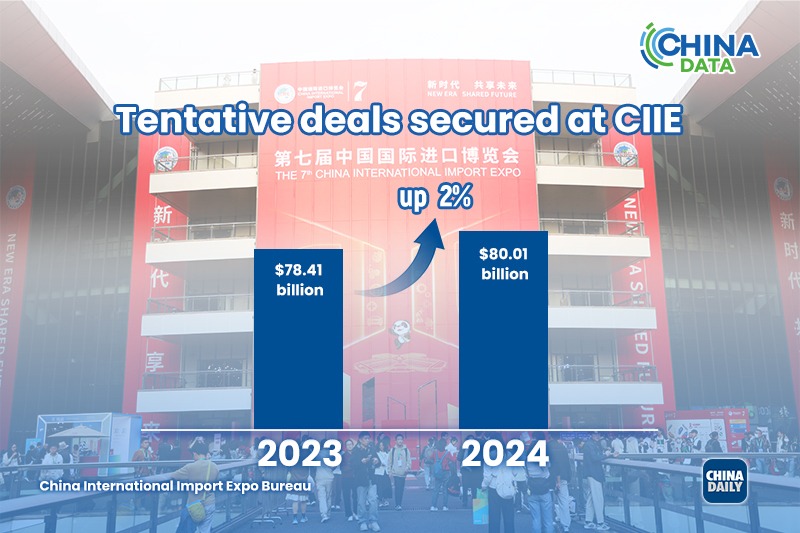Bridging the urban-rural divide


New infrastructure centering on internet and relevant service infrastructure are a prerequisite for developing nations' digital transformation in agriculture and rural areas
Since the turn of the century, the digital revolution empowered by the new generation of information technology has provided a huge opportunity for rural development and modernization of the agriculture sector.
The rise of e-commerce and the platform economy has not only opened up new markets for farm and sideline products, but also provided rural citizens with new opportunities to start their own businesses or get employed in nonagricultural sectors. The application of digital technologies including the internet of things and big data in the agricultural sector has enabled the enhancement of agricultural production efficiency, better protection of the ecological environment, and sustainable transformation and development of food and agricultural systems.
However, the laggard development of information infrastructure is not only a major obstacle to the digital transformation of agriculture and rural areas, but also increases the risk of wider urban-rural gaps.
According to the United Nations' International Telecommunication Union, an estimated 37 percent of the world's population — or 2.9 billion people — have never used the internet. The ITU estimated that the vast majority of the 2.9 billion people who have not accessed the web live in underdeveloped countries and rural areas. Globally, people in urban areas are twice as likely to use the internet than those in rural areas (76 percent of urban residents compared to 39 percent of rural residents). The share is a meager 15 percent for African nations.
To bridge the urban-rural digital divide and allow people living in rural or remote areas to share the benefits of digitaliztion, both developed nations — including European countries and the United States — and developing nations, with China and India as the representatives, have launched rural broadband construction projects and digital transformation of agriculture and rural areas.
For instance, aimed at narrowing the urban-rural digital divide, the US government launched the rural broadband plan in 2002. As a result, in the years from 2014 to 2018, the penetration rate of 100 megabits per second fixed broadband services in US rural areas jumped from 27 percent to 63 percent. However, there's still a long way to go compared with the 97 percent penetration in urban areas.
In 2012, India kick-started the rural broadband project, which aims to provide fiber optic broadband services to 250,000 Gram Panchayats (village councils). In 2018, the Indian government initiated a pilot digital project in 700 villages, in an attempt to enhance rural citizens' digital skills and improve public services in rural areas, such as in education, medical services and finance. The implementation of the rural broadband project increased the number of internet users in rural India from 130 million in 2017 to 350 million in 2021, with the internet penetration rate during the period increasing from 15 percent to 37 percent. However, the internet penetration in rural India, which has a 900 million population, is not only far lower than that in urban India (69 percent), but also lower than the global average (39 percent).
The information technology-driven development of China's agricultural sector and rural areas started in the early 1990s alongside the commencement of the nation's information construction. After nearly three decades of arduous efforts, especially driven by the informatization plan of agriculture and rural areas and the digital village strategy in the past 10 years, China has, with the institutional advantage that combines active government and efficient markets, greatly strengthened the construction of hardware infrastructure, including internet and logistics, as well as soft service facilities such as information services and e-commerce services in rural areas. This has laid a solid foundation for the transformation, development and quality enhancement of rural industries, village governance and rural public services. "Infrastructure First" has become a distinctive feature of the digital transformation of Chinese agriculture and rural areas.
Since 2014, the Chinese government has launched a slew of government-guided and market-oriented projects — such as the telecom universal service pilot project, the project of information entering the villages and households, and rural e-commerce comprehensive demonstration project — with the goal of advancing the construction of broadband, logistics networks, information service outlets for villagers, and e-commerce service sites in rural areas.
By the end of 2021, the coverage of broadband internet services in China's administrative villages, impoverished villages, and the "three areas and three prefectures "in extreme poverty had all reached 100 percent, a huge jump from that of less than 70 percent, 62 percent and 26 percent respectively in 2015.Rural and urban areas of the country have enjoyed equally fast internet, with the average download rate of optical fiber network in rural areas exceeding 100 Mb per second, closing the digital access gap for hundreds of millions of rural citizens. The internet penetration rate in rural areas increased from 32 percent in 2015 to 58 percent in 2021, with the urban-rural gap narrowing from 32 percentage points to 23 percentage points.
By the end of 2020, China had set up 454,000 information service outlets to provide services to villagers, covering nearly 90 percent of all administrative villages; and a total of 547,000 e-commerce service sites had been constructed in 401,000 administrative villages across China, covering nearly 80 percent of all administrative villages. That made it the world's largest comprehensive information services network for rural areas with such functions as public services, convenience services for the public, e-commerce services and professional skill training.
By virtue of the mushrooming of information infrastructure and service networks, China's rural areas have witnessed leapfrog growth in e-commerce over the past decade, which has not only created tens of millions of job opportunities and business startup opportunities for Chinese villagers, but also profoundly changed the industrial structure and growth pattern in Chinese villages. According to the Ministry of Commerce, by the end of 2021, the number of rural online business owners and online stores totaled 16.325 million, accounting for three quarters of the national total. From this perspective, China has undoubtedly established the world's largest rural e-commerce network.
The popularization of digital infrastructure in Chinese villages has also created favorable conditions for the digital and smart transformation of rural governance and public services. In 2019, Wusi village in Deqing county, Zhejiang province, for example, launched the digital village in one map program, which, by establishing a sensor network covering the 500-plus sensing equipment scattered across the village and an intelligent information-processing system, has realized visual monitoring and intelligent management of important village affairs, such as garbage sorting, farmland protection, and water area monitoring, and notably enhanced the efficiency of village governance. As of 2021, the system had been promoted in the entire Deqing county, which has over 300,000 villagers, and been successfully applied in many other localities across the nation.
China and India, the world's two major developing nations, top the world in terms of the size of their rural population. A review of the two nations' digital village development experience tells us that new infrastructure centering on internet and relevant service infrastructure could still be the top priority and prerequisite for developing nations' digital transformation in agriculture and rural areas.
The author is an associate professor of the School of Economics and a research fellow of the Center for Public Policy Studies at the University of the Chinese Academy of Social Sciences. The author contributed this article to China Watch, a think tank powered by China Daily.
Contact the editor at editor@chinawatch.cn


































